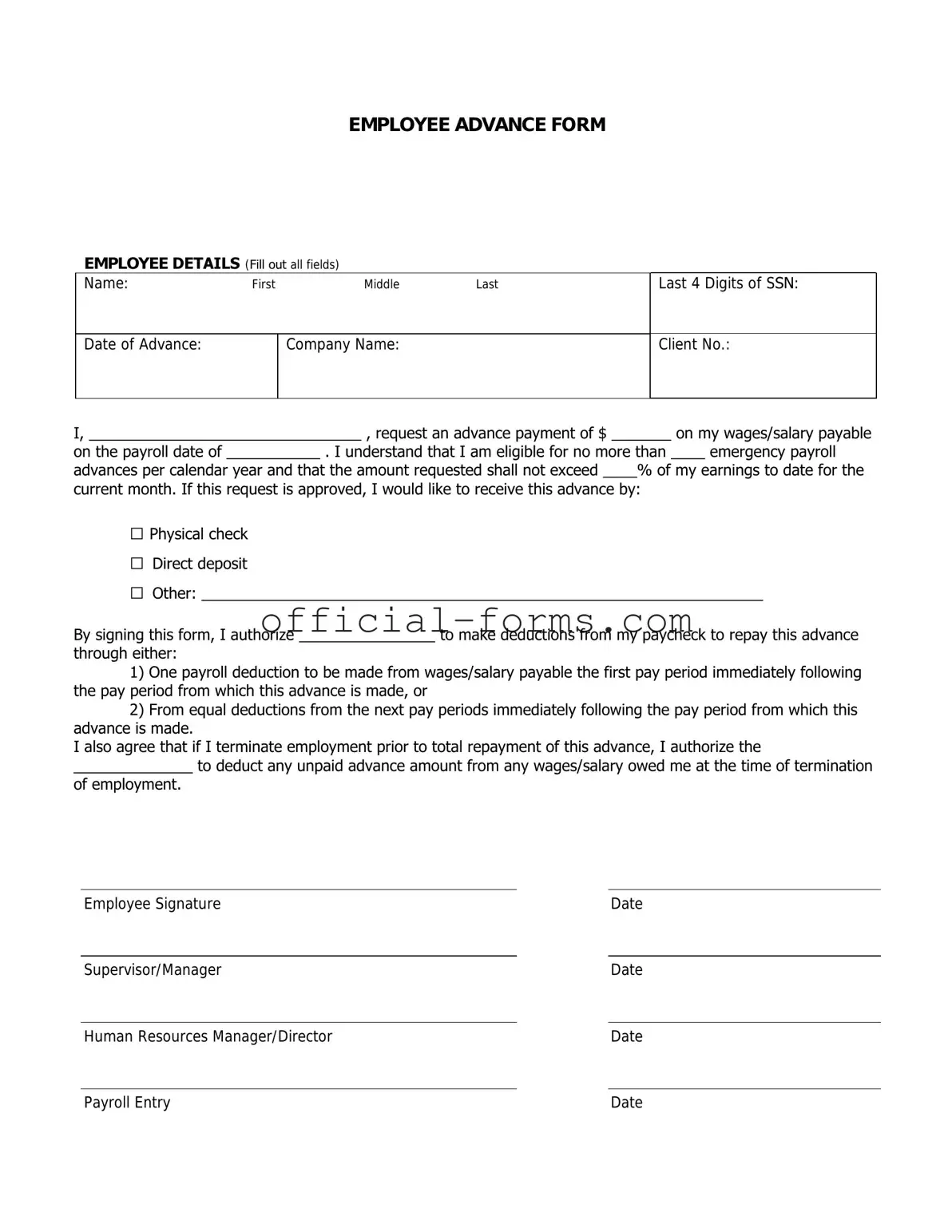When filling out the Employee Advance form, individuals often make several common mistakes that can lead to delays or complications in processing their requests. One frequent error is failing to provide complete personal information. Without a full name, employee ID, and contact information, the request may be difficult to process. It is essential to ensure that all required fields are filled out accurately.
Another mistake is not specifying the amount requested. Some employees may assume that the amount is clear from the context, but it is crucial to state the exact figure. This helps avoid confusion and ensures that the request is processed promptly. Clarity in the amount requested can prevent misunderstandings later on.
Additionally, people often overlook the purpose of the advance. The form typically requires a brief explanation of why the advance is needed. Skipping this section can lead to questions from the reviewer, which may slow down the approval process. Providing a clear and concise reason helps the reviewer understand the necessity of the request.
Many individuals also forget to sign and date the form. A signature confirms that the employee agrees to the terms outlined in the document. Without a signature, the form may be considered incomplete. It is a simple step that can easily be overlooked but is essential for processing.
Another common issue is submitting the form without the necessary supporting documentation. Depending on the company’s policy, additional paperwork may be required to justify the advance. Failing to include these documents can result in delays or even denial of the request.
People sometimes miscalculate their repayment terms. Understanding how and when the advance will be repaid is vital. Employees should ensure that they are aware of the repayment schedule and that it is accurately reflected in the form. Misunderstandings about repayment can lead to financial strain later on.
In some cases, individuals may submit the form to the wrong department or person. Knowing the correct procedure for submitting the form is important. Taking the time to verify the appropriate contact can save time and prevent frustration.
Lastly, neglecting to keep a copy of the submitted form is a mistake that can cause issues down the line. Having a record of the request helps in tracking its status and provides a reference if questions arise. It is always wise to retain a copy for personal records.
